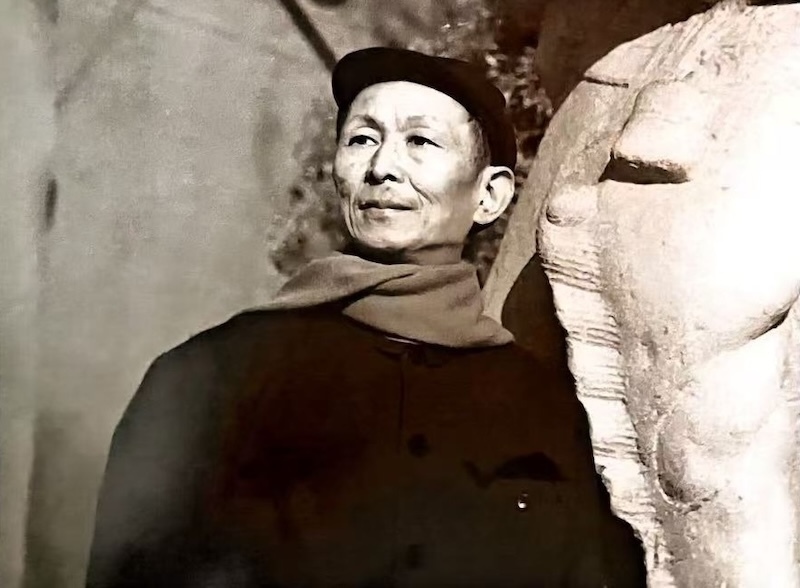
In Shanghai, Experience Dunhuang.
Pengpai News has learned from today's press conference held at the China Art Palace (Shanghai Art Museum) that the "What is Dunhuang" Dunhuang Art Exhibition will make a grand debut at the China Art Palace on September 20, adding significant cultural elements to the upcoming 2024 35th Shanghai Tourism Festival.
The "What is Dunhuang" exhibition features a combination of "cultural relics + replica classic caves + mural sculptures," sourcing a large number of highly representative and rare first- and second-tier precious cultural relics and replicas from the Dunhuang Academy. Among these treasures, several items making their debut in Shanghai include the largest relic in the Dunhuang Academy collection, the "Northern Liang Stone Pagoda," the "Gu Yi Army Government Office Wine Stele," selected as a national treasure, the "Shengli Stele," which records the excavation date of the Mogao Grottoes, and the famed Northern Wei embroidered Buddhist statue of a donor, which is prohibited from being exhibited abroad.

One of the exhibition posters

Press conference scene
Multiple National Treasures Making Their Debut in Shanghai
Dunhuang culture has continued for nearly two thousand years, integrating architecture, colored sculptures, and mural art. It is one of China's largest, most historically continuous, and relatively well-preserved historical sites, hailed as the "longest desert gallery in the world" and the "cultural art museum on walls."
According to reporters from Pengpai News at the press conference, this exhibition will feature a total of 168 items from the Dunhuang Academy collection. Many significant national treasures are making their debut in Shanghai, and this will be the most comprehensive and diverse display of Dunhuang cultural and artistic items ever held in Shanghai.

Northern Liang Stone Pagoda

Northern Wei Embroidered Buddhist Statue Donor

Gu Yi Army Government Office Wine Stele
The "What is Dunhuang" Dunhuang Art Exhibition focuses on the culture, art, and history of the Mogao Grottoes. It combines "cultural relics + replica classic caves + mural sculptures," featuring a large collection of rare first- and second-tier precious artifacts and replicas from the Dunhuang Academy, including prohibited artifacts from leaving the country, as well as numerous items debuting in Shanghai. The exhibition will also include 1:1 replicas of classic Mogao caves, allowing the audience to experience "Dunhuang in Shanghai."
Li Ping, Director of the Major Events Office of the Shanghai Municipal Administration of Culture and Tourism and Director of the Shanghai Cultural and Tourism Development Center, remarked that the "What is Dunhuang" Dunhuang Art Exhibition is a key cultural project for the 2024 35th Shanghai Tourism Festival. This powerful collaboration between the exhibition and the Shanghai Tourism Festival will undoubtedly create a high-quality cultural and tourism art feast for the public and tourists from home and abroad.
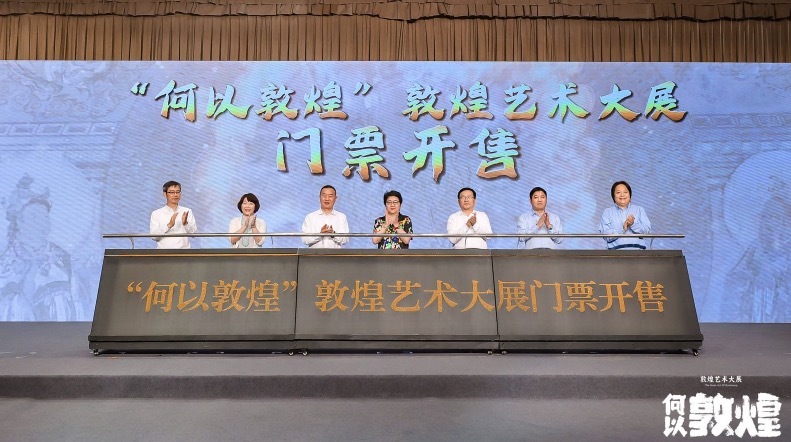
Press conference scene
Wang Yichuan, Party Secretary and Executive Director of the China Art Palace (Shanghai Art Museum), stated that during the exhibition, the museum will also hold a rich array of accompanying public education activities centered around the theme of Dunhuang. These will include a global collection of paintings titled "Dunhuang in My Heart," as well as Dunhuang cultural lectures and mural replication experiences.
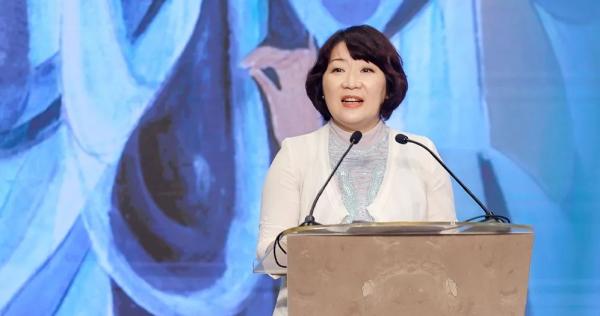
Wang Yichuan introduces exhibition supporting activities

Zhang Yuanlin, Vice President of the Dunhuang Academy, introduces the exhibition
Zhang Yuanlin, Vice President of the Dunhuang Academy, mentioned that several treasures are making their debut in Shanghai, including the largest relic in the Dunhuang Academy's collection, the Northern Liang Stone Pagoda, the Six-Character True Word Stele that witnesses the mutual learning of Dunhuang culture, the Shengli Stele which confirms the excavation date of the Mogao Grottoes, the Gu Yi Army Government Office Wine Stele selected as a national treasure, and the Northern Wei embroidered Buddhist statue of a donor that is prohibited from being exhibited abroad, along with the largest global debut of the digital return results of the national relic protection project representing the "Cave of Scriptures."
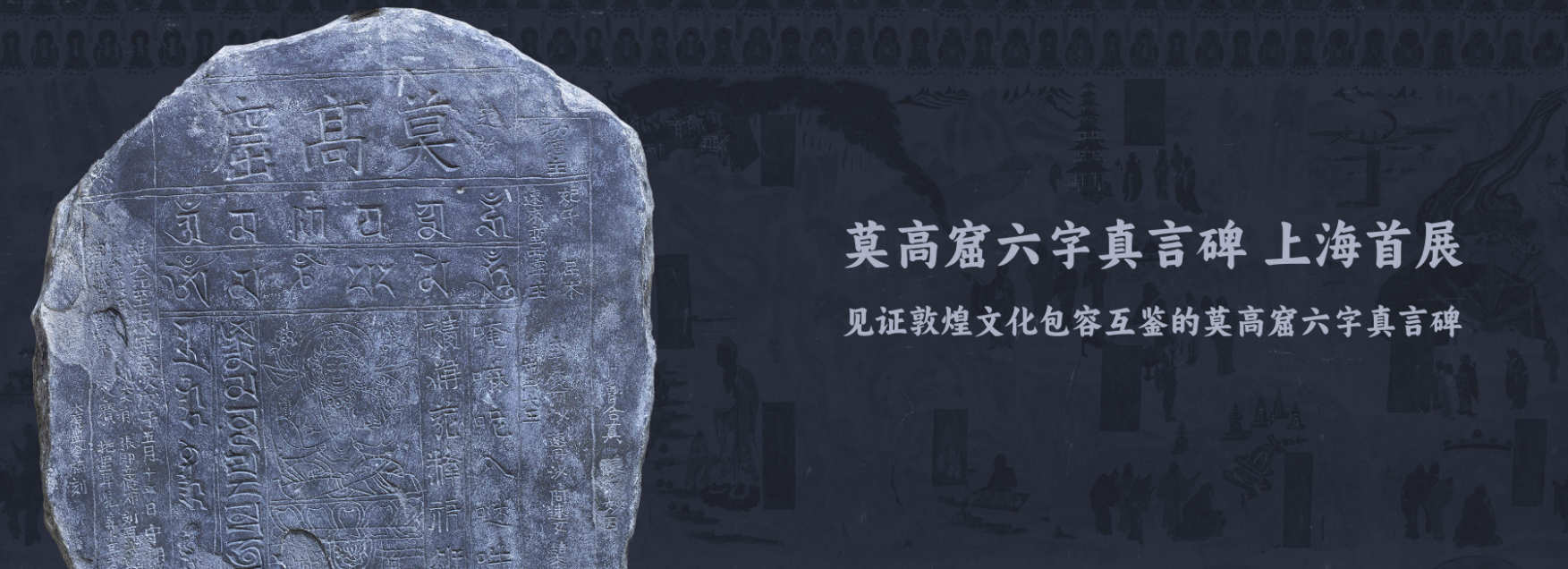
The Six-Character True Word Stele
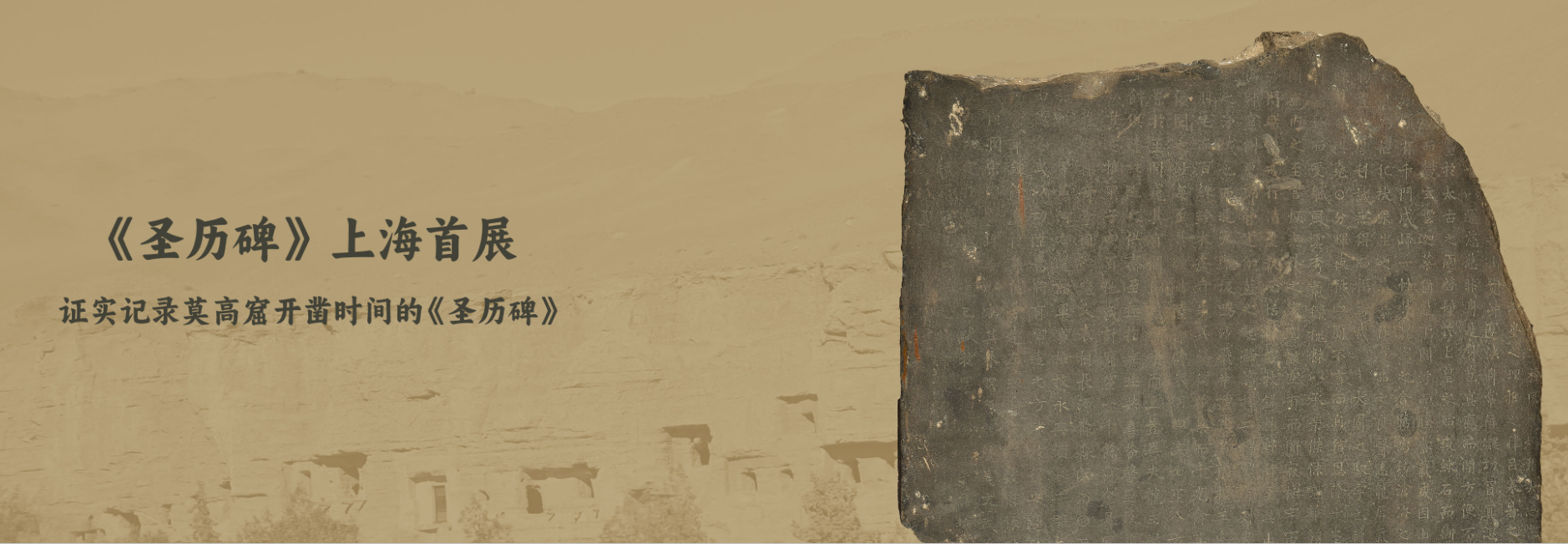
Shengli Stele

1:1 Replica of Cave 45

1:1 Replica of Cave 320
Visitors will also have the chance to admire 1:1 replicas of the Dunhuang cave complex during this major exhibition, including Cave 285 of the Western Wei, known as "a pantheon of diverse cultures," Cave 45 from the prosperous Tang Dynasty, termed the "Hall of Exquisite Statues," Cave 320, famously referred to as the "most beautiful Flying Apsara" by Master Chang Shuhong, Cave 158 featuring the "most beautiful Nirvana Buddha" from the mid-Tang period, the Yuan Dynasty's Cave 3 showcasing the "detailed Thousand-Handed and Thousand-Eyed Guanyin," and Cave 17, regarded as "the key to unlocking medieval world history."

1:1 Replica of Cave 158

1:1 Replica of Cave 17
Additionally, the exhibition will present six invaluable original manuscripts and their replicas from the Cave of Scriptures. Discovered in 1900 at the Dunhuang Cave of Scriptures (currently Cave 17 of the Mogao Grottoes), this find included thousands of ancient texts in various languages such as Han, Tibetan, Uighur, Sogdian, Sanskrit, Khotanese, and Tocharians, as well as Buddhist paintings and various artifacts. The discovery provided an immense and richly detailed treasure trove of materials for studying the ancient history, geography, religion, economy, politics, ethnicity, language, literature, art, and science of China, Central Asia, West Asia, and Europe, sparking a global "Dunhuang Studies" craze. The six selected manuscripts include the world's earliest dated printed text, the "Diamond Sutra," the earliest and most comprehensive ancient star map, the "Complete Star Map," the earliest known paper manuscript calendar, the "Calendar of the 11th and 12th Year of the Taiping Zhenjun," the earliest work on Go in Chinese history, "The Manual of Go," our nation's earliest published pharmacopoeia, "Newly Edited Materia Medica," and the earliest water management code in China, "Kaiyuan Water Department Code."
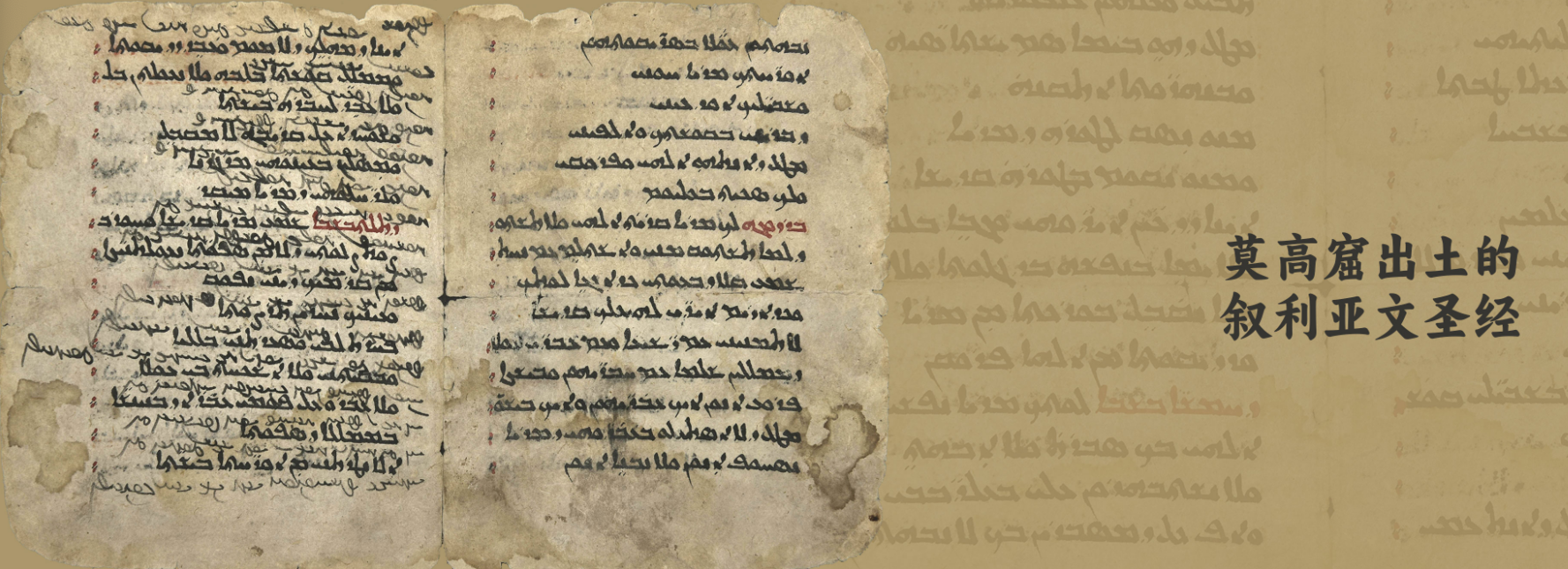
Syriac Bible
An Immersive Experience of Dunhuang Culture
To present the essence and depth of Dunhuang culture, this exhibition features four distinct sections, providing citizens and visitors with opportunities to personally experience this outstanding aspect of traditional Chinese culture.
The first section, "Silk Road · Dunhuang," begins with the great Zhang Qian's "opening the Western regions," where merchants from various countries engage in mutual exchanges. The convergence of diverse cultures allows Dunhuang, a flower blossoming in the desert, to flourish, making the Yangguan and Yumenguan pass timelessly resonate, and transforming the Mogao grotto into a spiritual stop and a pearl of the Silk Road.
The second section, "Caves · Pure Land," is the highlight of the exhibition. It features 1:1 replicas of six representative classic Dunhuang caves, including Caves 3, 17, 45, 158, 285, and 320, enabling visitors to feel as though they are "physically in Shanghai, with their eyes on Dunhuang."
The third section, "Encounter · Cave of Scriptures," showcases "the encyclopedia of the medieval period," Mogao Cave 17, recognized as one of the greatest archaeological discoveries of the 20th century, highlighting its significance in cultural dispersal and our contemporary efforts for the digital return of artifacts.
The fourth section, "Perseverance · Heritage," will primarily present the "Mogao Spirit" exemplified by generations of those involved with the Mogao Grottoes, showcasing their dedication, willingness to contribute, courage to take responsibility, and spirit of exploration, and track the evolution of the cave protection efforts from "guarding preservation" to "salvage preservation," "scientific preservation," and "preventive preservation."

Exhibition poster
According to the organizers, tickets for the exhibition are priced at 98 yuan each and must be purchased with real name registration. The ticket purchase channels include Maoyan, Damai, Douyin, Ctrip, Maitao, Ticket Planet, and the official website of Spring and Autumn Travel. Citizens and tourists can search "What is Dunhuang Dunhuang Art Exhibition" in these platforms to buy tickets.
On the afternoon of August 20, the organizers released a limited-time ticket at a sale price of only 39 yuan each, which sold out in a second. At the same time, a limited quantity of early bird tickets priced at 58 yuan each was made available until sold out. Child tickets priced at 9.9 yuan and discounted tickets for designated groups at 49 yuan each were also launched simultaneously. Additionally, a limited number of on-site tickets will be available for sale at the exhibition venue.
This exhibition is guided by the Shanghai Municipal Administration of Culture and Tourism, co-hosted by the Dunhuang Academy and the China Art Palace (Shanghai Art Museum), organized by "Tourism Times" and the Shanghai Cultural and Tourism Development Center, with special support from the China Dunhuang Grottoes Protection Research Foundation and the Dunhuang Gold Culture brand.
The exhibition will run until December 20.


